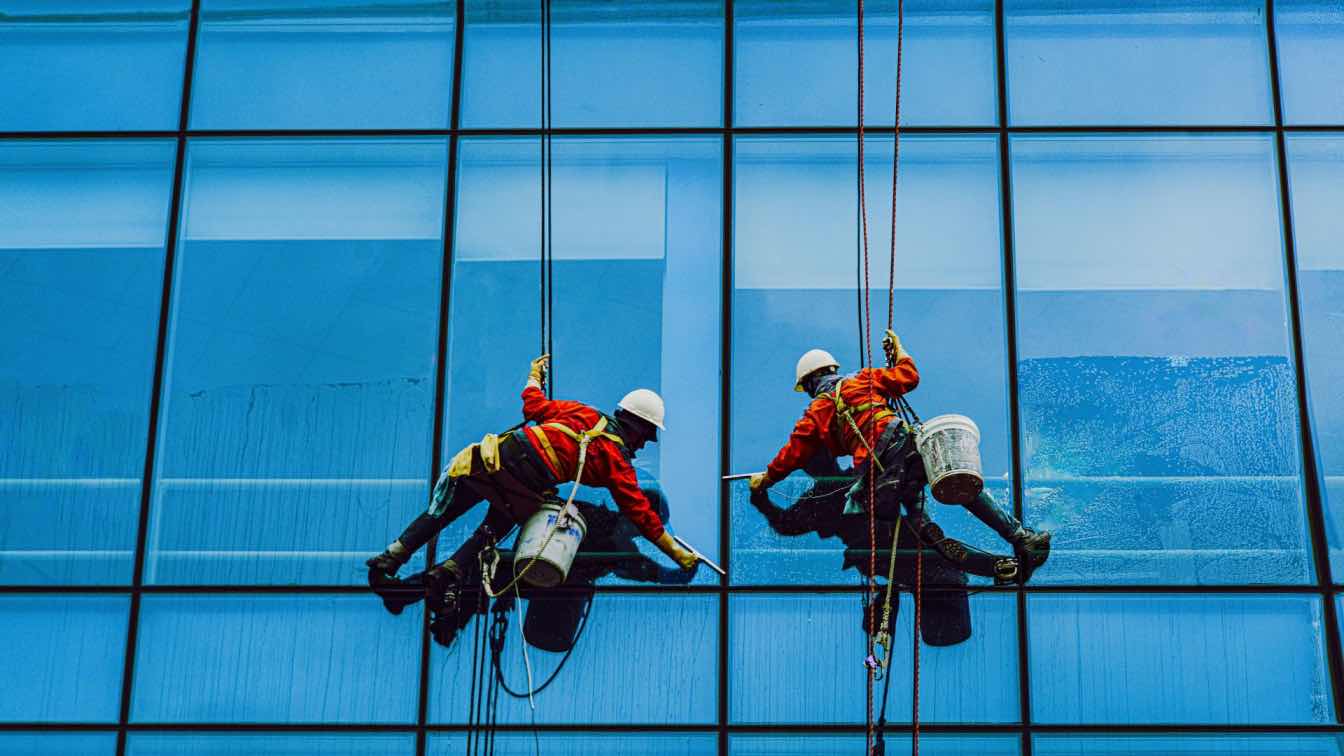Cleaning high-rise buildings can be extremely risky and dangerous, especially without the proper knowledge and tools. As skyscrapers continue to fill our city skylines, the demand for skilled window cleaners has grown significantly.
The United States currently ranks as the second-leading nation in skyscraper counts, with approximately 878 buildings over 150 meters and 235 buildings exceeding 200 meters in height. In addition, over 30 super-tall buildings reach heights exceeding 300 meters.
Unfortunately, as the number of skyscrapers increases, so does the number of work-related skyscraper accidents.
In 2010, the U.S. Bureau of Labor Statistics reported 646 falls in various industries, with ten involving window washers. Seven of these involved falling to a lower level. Although this statistic may seem low, it underscores a significant risk that window washers face daily, highlighting the need for stringent safety protocols and ongoing training in the industry.
Whether you manage your own window cleaning business or you’re a window washer yourself, here’s how you can avoid accidents and maintain a safe work environment:
Understand All the Related Safety Regulations
Compliance with safety regulations goes beyond following the law; it ensures the safety of everyone involved. Understanding and adhering to the Occupational Safety and Health Administration (OSHA) guidelines and the local safety laws is crucial for any high-rise window cleaning operation.
Here are some examples of laws and guidelines that specifically address high-rise window cleaning safety:
OSHA 1910.27 - This regulation deals with scaffolds and rope descent systems, specifying the requirements for their use in window cleaning and other maintenance activities at heights.
OSHA 1910.66 - This covers the use of powered platforms for exterior building maintenance, including window cleaning, and details about safety measures for equipment and operations.
ANSI/IWCA I-14.1-2001 - This is a standard for window cleaning safety that provides guidelines for the proper use of equipment, training requirements, and safety measures to protect window cleaners working at heights.
Local State and City Regulations - Many states and cities have additional regulations that complement federal OSHA standards, addressing local safety concerns and requirements for window cleaning operations. For example, some cities might have stricter regulations on the use of suspended scaffolds or require specific permits for window cleaning at certain heights.
Get All the Essential Safety Equipment for High-Rise Window Washing
Using the proper tools and equipment is essential in high-rise window washing, not only for safety but also for efficiency, quality of work, and compliance with legal standards.
Proper tools, such as safety harnesses, ropes, and secured platforms, significantly reduce the risk of falls, thereby enhancing the safety of workers at great heights. These tools also allow for more efficient work, speeding up tasks and potentially lowering costs.
And, of course, using high-quality tools ensures that cleaning is performed to the highest standards, leaving windows streak-free and maintaining the aesthetic appeal of buildings. Here are some of the most important tools you need for high-rise window cleaning jobs:
- Scaffolding and Suspended Platforms
- Rope Descent Systems (RDS)
- Bosun’s Chair
- Safety Harnesses
- Squeegees and T-bars
- Buckets and Cleaning Solutions
- Scraper and Blades
- Lanyards and Carabiners
- Water-fed Poles
- Personal Protective Equipment (PPE)
Maintain Up-to-Date Training and Certifications
No matter what profession you practice, it's vital to always keep learning, especially in a job where your life is potentially at risk.
Undergoing certified training programs related to high-rise window cleaning not only enhances safety by teaching the latest best practices and safety protocols but also improves efficiency by introducing more effective cleaning techniques and the use of advanced equipment. Here are some training programs related to high-rise window cleaning that you should consider:
Basic Safety Training: This covers fundamental safety measures, personal protective equipment (PPE), and emergency procedures. It's essential for all newcomers to the field.
Rope Access Training: These programs teach skills for safely using rope descent systems, including setup, operation, and emergency handling. They often adhere to standards set by organizations like the Society of Professional Rope Access Technicians (SPRAT) or the Industrial Rope Access Trade Association (IRATA).
Certified Training for Specific Equipment: Specialized training for using scaffolds, aerial lifts, and bosun chairs. This training ensures operators can handle the equipment safely and efficiently.
Rescue and First Aid Training: Programs that teach how to respond in case of an accident, including how to perform high-angle rescues and administer first aid.
Supervisory and Management Training: For those moving into supervisory roles, these programs focus on job site safety management, regulatory compliance, and crew supervision.
These training programs are designed to teach you how to deal with different types of commercial windows, including electric window openers.
Conclusion
The key to minimizing risks in high-rise window cleaning lies in continuous training, having the proper tools, and adherence to best practices. Staying informed and prepared is the best defense against the inherent risks of this challenging profession.
About the Author
Nikolay Nikolov is a professional gutter and window cleaner. Nikolay is proud when he can help his fellow locals unclog and clean their gutters, clean their windows, driveways, and eavestroughs and install their holiday lights. He loves what he does, and his motto is to make the world a happier & cleaner place one home/business at a time.





